Image

However famous or infamous you are – or were - there’s no getting around the fact that when you’re dead, you’re dead.
When most celebrities die, what happens to them is the same as what happens to anyone else: they get buried, or cremated or their remains are disposed of in some other way. Permanently. End of.
But not in the extraordinary cases that Mark Bunyan catalogues in his musical Unburied Treasures. It disinters some of the famous and not so famous to blackly comic effect.
Sometimes the lure of fame post-mortem proved just too strong and the celeb’s body - or some bits of it - ended up somewhere else for some other purpose. Sometimes for a very long time indeed. Sometimes forever.

Skulls.
Hip bones.
Thigh bones.
Hearts.
And other assorted body parts.
This isn’t prurience, it isn’t superstitious mystery
It’s interesting stuff, it’s fascinating history.
Coffins.
Caskets.
Boxes.
Urns.
Some they buries and some they burns.
If you want to know whose bodies and other bits and bobs are featured in Unburied Treasures, then read on.
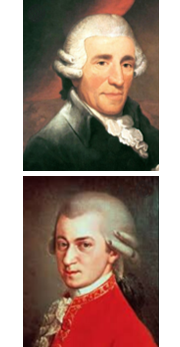 The eponymous crania celebrated in “Jo and Mo” belonged to the 18 century musical legends Josef Haydn (1732-1809), top right, and his friend and fellow young composing genius Wolfgang Amadeus Mozart (1756-1791), middle right.
The eponymous crania celebrated in “Jo and Mo” belonged to the 18 century musical legends Josef Haydn (1732-1809), top right, and his friend and fellow young composing genius Wolfgang Amadeus Mozart (1756-1791), middle right.
Both were victims after death of literal skulduggery. Their age was mad for “phrenology”, the scientifically baseless but hugely fashionable theory that it is possible to determine psychological attributes – like musical genius – by examining the pattern and prominence of certain bumps on an individual’s cranium. The phrenological head below illustrates the areas associated with different traits and characteristics.
Stolen from his grave shortly after his death in 1809, Haydn’s skull was said to display a well developed “bump of music” and then passed into various private collections and remained hidden and presumed lost for decades. Haydn’s skull was only restored to his skeleton in 1954.
 His short-lived brilliant young friend Mozart suffered a similar undignified fate, probably some years after his burial in 1791 when his skull, too, was stolen. Despite various claims and efforts to authenticate possible crania, or bits of them, as his, the genuine Mozart skull has never been found.
His short-lived brilliant young friend Mozart suffered a similar undignified fate, probably some years after his burial in 1791 when his skull, too, was stolen. Despite various claims and efforts to authenticate possible crania, or bits of them, as his, the genuine Mozart skull has never been found.
If eager grave-robbing phrenologists ever examined Mozart’s genuine skull, what they discovered about his musical attributes has not been recorded.
But actually, who cares? Mozart’s musical genius is only too apparent in his abundant works. Whatever the bumps on his cranium might, or might not, have said.
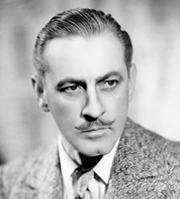 John Barrymore (1882-1942, top right), was an American star of theatre, film and radio: much married, plagued by alcoholism and later bankrupted.
John Barrymore (1882-1942, top right), was an American star of theatre, film and radio: much married, plagued by alcoholism and later bankrupted.
Death didn’t end the scandals that plagued him in life. His corpse experienced a Jekyll and Hyde fate reprising one of his most famous movie roles.
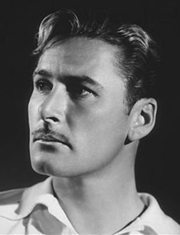 Grand-daughter and actor Drew Barrymore claims his body was purloined from the morgue by some of his drinking pals, including WC Fields and Raoul Walsh, in a boozy jape as part of a final mischief-making party at Errol Flynn’s (1909-1959, below right) Hollywood house. Flynn’s drink-fuelled, hell-raising memoir recounts the event.
Grand-daughter and actor Drew Barrymore claims his body was purloined from the morgue by some of his drinking pals, including WC Fields and Raoul Walsh, in a boozy jape as part of a final mischief-making party at Errol Flynn’s (1909-1959, below right) Hollywood house. Flynn’s drink-fuelled, hell-raising memoir recounts the event.
The facts are contested, but nevertheless it’s a great celebrity bodysnatching story about “Happy in Hollywood” high jinks.
 We’re happy in Hollywood.
We’re happy in Hollywood.
We’re all okey-doke.
So happy in Hollywood.
Life’s all sunshine, death’s a joke.
So when the mourners are looking sad
Till the corpse starts in a-twitchin’
Seems certain that someone had
A pocket full of moolah
To bribe the mortician.
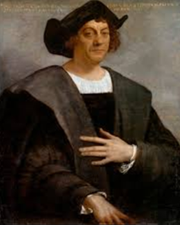 Christopher Columbus wouldn’t recognise anyone by that name, certainly not himself. The Genoese (Ligurian) adventurer and navigator named Cristoffa or Cristofero Colombo (1451-1506) was known to his Spanish employers Queen Isabella I of Castile and King Ferdinand II of Aragon as Cristóbal Colón.
Christopher Columbus wouldn’t recognise anyone by that name, certainly not himself. The Genoese (Ligurian) adventurer and navigator named Cristoffa or Cristofero Colombo (1451-1506) was known to his Spanish employers Queen Isabella I of Castile and King Ferdinand II of Aragon as Cristóbal Colón.
He knew that he wanted to go to the Indies when he embarked in 1492, but had no idea where he was when he arrived and when he returned to Spain could not explain where he had been. Despite his certainty, it wasn’t Asia. Ask the Vikings; they did it some 400 years previously; but hey, they aren’t part of this story.
After a scandal ridden career, history records his death in Valladolid, Spain on the 20th of May 1506, aged 54. After that, the record about the whereabouts of his meandering remains is patchy to say the least.
The trail runs from Valladolid, to Seville, to Santo Domingo in today’s Dominican Republic, then to Havana in Cuba and finally back to Seville in the late 19th century. The catafalque tomb in Seville Cathedral is elaborate and creepily carried by four monarchs he did business with, but exactly who is inside remains debatable.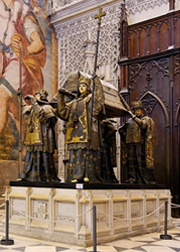
Did you discover America or were you merely sailing?
Did you at last find rest or are you still roaming?
Cristofero Colon, who knows where you are?
Who indeed?
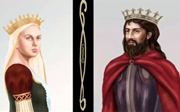
Her torrid but forbidden affaire with (the already married) Pedro, Crown Prince of Portugal, led to Inês de Castro’s murder and decapitation in 1355 on his father King Afonso IV’s orders. Pedro took bloody revenge on her killers when he took the throne. Think ripping out their hearts.
Still clearly besotted with the noble Inês, legend says that the new King Pedro I had his lover resurrected and he then crowned the exhumed corpse as Queen Inês. Thus begetting a whole genre in painting and literature about Portugal’s only posthumous queen. Getting Inês’ diadem to sit properly must have been a challenge.
Ines de Castro was lovely
Ines de Castro was dead.
When they brought her to court she was all skin and bone
On account of the years she’d been lying alone
But she still got a crown and to sit on the throne.
After his death, Pedro and Inês got side by side tombs so they could gaze on each other for eternity. And they still do.
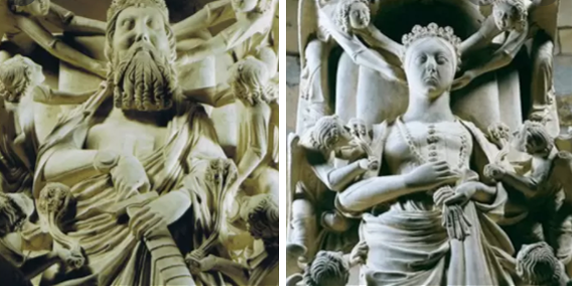
 There are so many famous bodies to choose from in Pere Lachaise cemetery (Cimetière du Père-Lachaise) at 44 hectares the largest boneyard in Paris. Established in 1804 by Napoleon, it was slow to take off with the fashionable (and affluent) dead, so the owners made efforts to make it more appealing by importing some long-deceased “new” residents.
There are so many famous bodies to choose from in Pere Lachaise cemetery (Cimetière du Père-Lachaise) at 44 hectares the largest boneyard in Paris. Established in 1804 by Napoleon, it was slow to take off with the fashionable (and affluent) dead, so the owners made efforts to make it more appealing by importing some long-deceased “new” residents.
Moliere moved (or more accurately was moved by the proprietors) there, to be joined shortly afterwards by fellow literary lion La Fontaine. So famous they even have a section named for them (assuming the remains deposited there are really theirs, of course).
 With great spectacle in 1817 - a red carpet event attended the Empress Josephine no less - the (purported) mortal remains of star crossed 12th century lovers Abélard and Héloïse found a new resting place in Pere Lachaise.
With great spectacle in 1817 - a red carpet event attended the Empress Josephine no less - the (purported) mortal remains of star crossed 12th century lovers Abélard and Héloïse found a new resting place in Pere Lachaise.
After that mortuary coup, the struggling cemetery never looked back and it moved into the big league of celebrity burial spots. It became the cemetery everyone wanted to be seen dead in, including American rock stars.
 Like Jim Morrison lead singer of “The Doors” (1943-1971) who died in Paris and is interred at Pere Lachaise. Fittingly for a notorious bad boy and larger than life icon of rock and roll, the bronze plaque on his grave is inscribed in Greek: ΚΑΤΑ ΤΟΝ ΔΑΙΜΟΝΑ ΕΑΥΤΟΥ, meaning "true to his own spirit" - or if you want something a bit racier, "according to his own daemon". You can get away with that when you die unexpectedly in your bath at age 27.
Like Jim Morrison lead singer of “The Doors” (1943-1971) who died in Paris and is interred at Pere Lachaise. Fittingly for a notorious bad boy and larger than life icon of rock and roll, the bronze plaque on his grave is inscribed in Greek: ΚΑΤΑ ΤΟΝ ΔΑΙΜΟΝΑ ΕΑΥΤΟΥ, meaning "true to his own spirit" - or if you want something a bit racier, "according to his own daemon". You can get away with that when you die unexpectedly in your bath at age 27.
And there is (apparently) no truth to the persistent (and delicious) story that the stone genitals on the winged sphinx guardian of Oscar Wilde’s tomb by modernist sculptor Jacob Epstein, were removed from the mythical creature in 1961 by two puritanical English ladies shocked by their size and prominence.
 What is true is that at its unveiling in August 1914, a bronze plaque was strategically placed to cover the testicles whose size was considered unusual, if not immodest. This infuriated Epstein who refused to attend the ceremony. Oscar would have been very amused, no doubt.
What is true is that at its unveiling in August 1914, a bronze plaque was strategically placed to cover the testicles whose size was considered unusual, if not immodest. This infuriated Epstein who refused to attend the ceremony. Oscar would have been very amused, no doubt.
It's the fash’nable spot,
Where the best people rot
Yes it's all the beau monde and his wife!
Let the jollity begin!
Come get yourself dug in!
With Gertrude Stein and Alice Toklas, Lalique and Poulenc
And Ingres and Signac and Seurat, dis donc?
Isadora, Miss Duncan, Enescu, Chopin,
Marcel Proust, Modigliani, the Menier clan,
Sarah Bernhardt's imposing.
Bizet's busy decomposing.
There's so many names here that ev’ryone will know
You can't leave the last word to Marcel Marceau.
There's a trio of superstars remaining of course.
Oscar Wilde, Edith Piaf and Jim Morrison of the Doors.
Depending on your point of view, Daniel Boone, 1734-1820, was either: 1) an American pioneer. explorer and surveyor who helped open-up the interior of the continent for settlement as “the Columbus of the Woods” (perhaps an unfortunate allusion given what we know about the navigator’s activities nowadays); or 2) a single-minded land-grabbing exterminator of Native Americans and plunderer of their tribal homelands.
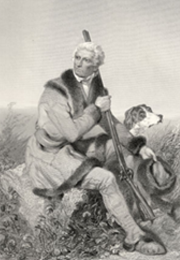 Either way, he certainly wasn’t a ruffian in a coonskin cap as portrayed by Fess Parker in the popular 1960s US eponymous television series. Boone was no identikit “Davy Crockett”.
Either way, he certainly wasn’t a ruffian in a coonskin cap as portrayed by Fess Parker in the popular 1960s US eponymous television series. Boone was no identikit “Davy Crockett”.
What we do know is that the states of Kentucky and Missouri tussled over his memory and his remains for years after his demise. Which seems odd as he’d been born in Pennsylvania and lived when young in North Carolina. Boone and his wife died in Missouri. But they didn’t stay there, as both got moved to Frankfort, Kentucky in 1845. Missourians fumed about that and spread the story that the Boones had never left Missouri because Boone’s headstone in the cemetery was on the wrong grave and the Kentuckians had dug up and taken away remains from the “wrong” grave.
Daniel Boone, pioneer
Fought with a bear.
He was mighty plucky
Had himself a political career
Which is why he’s buried in Kentucky.
To make his fame endure
He moved his weary bones on west
To a farm in Defiance in Missouri
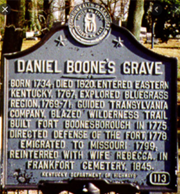 Which is where his bones are still at rest.
Which is where his bones are still at rest.
Lucky Daniel has two tomb stones.
There’s no proof either way and it could be a 19th century fake news story. Today both states claim Boone’s remains and the dispute about who “owns” him continues to bubble away. One thing’s for certain, they can’t both be right about whose got the “bones of Boone”. But it makes a great story.
Romantic poet and playwright and political radical Percy Bysshe Shelley, 1792-1822, drowned when the boat he was sailing in with several others foundered in a sudden storm on the Gulf of Spezia near Livorno, Italy. His decomposed body washed ashore ten days later near Viareggio where it was cremated by his friends. His wife Mary, who was travelling with him in Italy, was not present. Later, Shelley's ashes were interred in the Protestant Cemetery in Rome. He is now memorialised in Poets' Corner at Westminster Abbey, recognised as a trailblazer and literary legend.
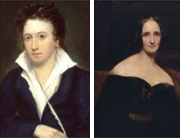 But how much of Shelley actually turned to ashes on that Italian beach? Legend says the cremation was botched, and that someone snatched Shelley's 'heart' from the fire and later gave it to Mary. But was it his heart, or a charred, calcified (Shelly had tuberculosis that would have soon killed him) piece of some other organ?
But how much of Shelley actually turned to ashes on that Italian beach? Legend says the cremation was botched, and that someone snatched Shelley's 'heart' from the fire and later gave it to Mary. But was it his heart, or a charred, calcified (Shelly had tuberculosis that would have soon killed him) piece of some other organ?
Mary Wollstonecraft Shelley was the creator of gothic science fiction masterpiece Frankenstein, or The Modern Prometheus and no mean literary and social radical figure in her own right. She wrapped her lover’s “heart” in silk and carried it with her with pages of his poetry for the rest of her life. It doesn’t matter whether it was really his heart or a desiccated hunk of his liver as others have speculated. It’s Mary’s enduring passion for him that counts in this story. That’s what remains.
For all the time that ever is
There was the two of us.
What remains?
That certainty remains
Whilst I remain and
Time goes on, seasons change,
Ev'ry leaf must fall.
"Tis better to have loved and lost than never loved and all."
And I would give my life
For one more word with you
María Eva Duarte de Perón (nickname “Evita”) had a brief but glittering career as First Lady of Argentina, dying at 33 (July 1952) from cervical cancer.
 Given the title of "Spiritual Leader of the Nation" by the Argentine Congress, Eva was given a state funeral.
Given the title of "Spiritual Leader of the Nation" by the Argentine Congress, Eva was given a state funeral.
Her dictator husband, President Juan Peron, decided to preserve Eva for posterity (and to exploit the huge political capital and mass following she had created) by having her embalmed and put on public display.
Dr Pedro Aro’s embalming work replaced her blood with glycerine to preserve internal organs and created the appearance of "artistically rendered sleep." At a price over $100,000 US dollars, an astronomical sum for the time.
She was meant to reside on display to the public (think Lenin’s mausoleum in Red Square) in the base of a building topped by a statue of her larger than the Statue of Liberty. But Peron was ousted in a coup led by General Aramburu in 1955 and fled without time to take Eva/Evita with him. Peronism was outlawed and Evita’s remains disappeared for 16 years. She went on a global odyssey and who can say what really happened to the remains during that time.
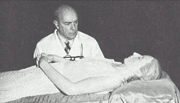 Eventually Person returned as President in 1973, promptly died the next year and his third wife (and Vice President) Isabel Peron was left to arrange the return of Evita to Argentina in 1974. The body finally made it to the Duarte family’s tomb in La Recoleta Cemetery, Buenos Aires in 1976, secured beneath five metres of double and triple layers of coffins, trap doors and bombproof layers of concrete.
Eventually Person returned as President in 1973, promptly died the next year and his third wife (and Vice President) Isabel Peron was left to arrange the return of Evita to Argentina in 1974. The body finally made it to the Duarte family’s tomb in La Recoleta Cemetery, Buenos Aires in 1976, secured beneath five metres of double and triple layers of coffins, trap doors and bombproof layers of concrete.
It’s probably still there, assuming it really was Evita that returned in the first place. There’s no real evidence to prove it or to disprove it. And what became of the missing finger?
Eva Peron is dead with
Curses upon her head.
Evita grows more blessed ev’ry day.
Listen to them criticising Eva.
Evita garners praise without restraint.
"Eva? Oh I never could believe her."
"Evita should be made a saint."
Eva or Evita
Do we come to bury Eva or to praise her?
She's finally made the grade.
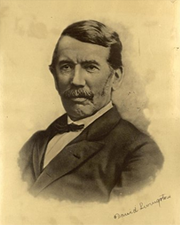 After enduring months of fever, dysentery, bleeding haemorrhoids, all plaguing his futile search for the Nile's source, the physician, earnest but unsuccessful missionary, antislavery campaigner, imperialist and explorer David Livingstone died age 60 on the night of 30 April 1873, in what is today Zambia.
After enduring months of fever, dysentery, bleeding haemorrhoids, all plaguing his futile search for the Nile's source, the physician, earnest but unsuccessful missionary, antislavery campaigner, imperialist and explorer David Livingstone died age 60 on the night of 30 April 1873, in what is today Zambia.
His African friends and colleagues acted quickly to preserve his body. Removing his internal organs, salting the body and letting it dry in the sun for a fortnight before elaborately wrapping it in cloth, bark and sail canvas. They sealed the whole cocoon shaped thing with tar to make it airtight for its 1,000-mile journey to the coast for shipment back “home” to England. Also to disguise it as trade goods so no one would suspect they were carrying a corpse.
They trekked for nine months. Ten men died. The survivors carried on out of respect and a hope that the authorities would reward them for their troubles. They were treated shabbily. Once aboard a British warship, they got no more than the back wages Livingstone owed them.
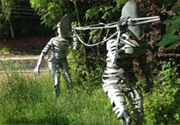 Close to the station platform in Livingstone’s home town of Blantyre on the Clyde in South Lanarkshire, is a metal sculpture erected in 2017. Two masked Africans tramp through the undergrowth with a pole slung between them. This is how his African friends carried Livingstone’s embalmed cadaver through the jungle to the coast in 1873.
Close to the station platform in Livingstone’s home town of Blantyre on the Clyde in South Lanarkshire, is a metal sculpture erected in 2017. Two masked Africans tramp through the undergrowth with a pole slung between them. This is how his African friends carried Livingstone’s embalmed cadaver through the jungle to the coast in 1873.
Eventually what was left of Livingstone was accorded what amounted to a state funeral in London. Jacob Wainwright, one of his African companions, who had helped bring his body from Africa walked down the aisle to accompany Livingstone’s coffin to its final resting place.
So there you have it, all the “unburied treasures” on this cast album. And as the finale Everybody Dies says:
Remember that this is the thing that we all share
Everybody croaks, believe me honey.
But keep on cracking jokes it’s more fun being funny.
Everyone shuffles off this mortal coil.
But until it’s shuffling time, you might as well smoil!